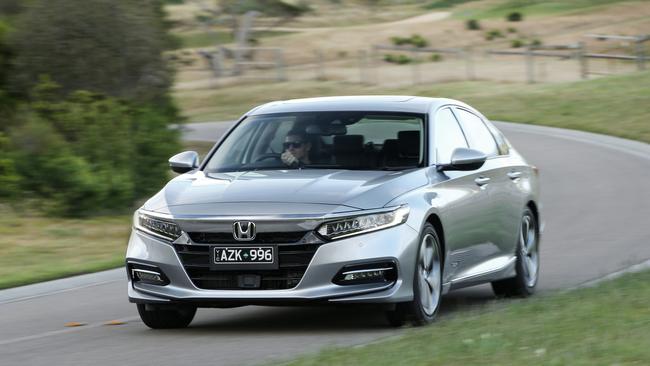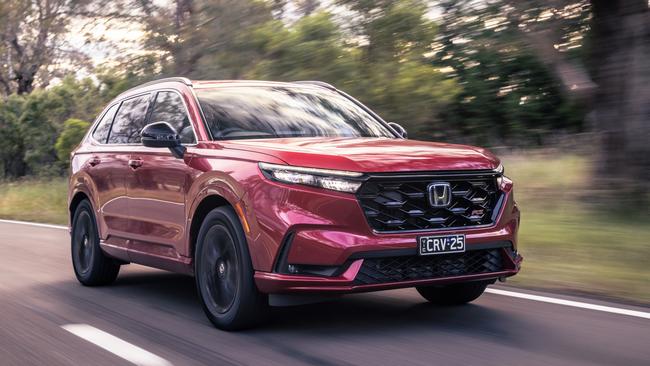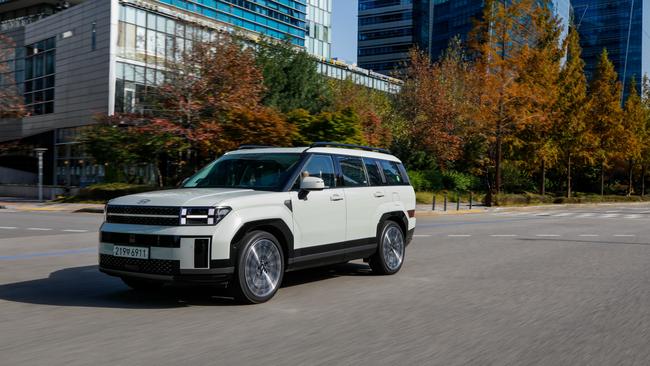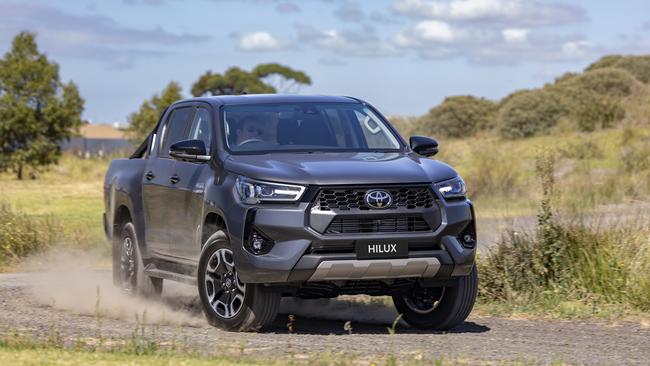Bowser busters: Australia’s best hybrid cars
Rising fuel costs are changing the way people think about cars, making petrol-electric hybrid options more popular than ever.

Motoring News
Don't miss out on the headlines from Motoring News. Followed categories will be added to My News.
Surging fuel prices are pushing motorists toward hybrids and more efficient cars.
Sales of hybrid cars have more than doubled, rising from 6 per cent of the total new-car market in March 2023 to 14 per cent last month.
Electric car sales increased from 6.8 per cent to 9.5 per cent in the same time.
Recent Roy Morgan survey data suggests the number of people planning to buy a hybrid car in the next four years has increased significantly, while demand for petrol or diesel cars is falling.

Roy Morgan chief executive Michele Levine says 30 per cent of people intending to buy a car have a hybrid in mind, with an additional 150,000 people seeking out petrol-electric cars.
“This growth far outstrips that for electric vehicles … and shows the perceived benefits surrounding hybrid cars are an increasingly attractive force for those in the market for a new car,” she said.
“Looking at these two classes of vehicles together shows that 1,880,000 (up 191,000) people now intend to purchase either a hybrid or fully electric car in the next four years – ahead of the preference for petrol vehicles (1,689,000) for the first time.”
Fuel-sipping petrol-electric cars used to be relatively rare outside Toyota showrooms. But several manufacturers have released attractive new options.
We’ve focused on conventional hybrid cars here rather than plug-in hybrid cars that don’t come close to matching claimed fuel figures in the real world.
Hybrid vehicles typically cost more than their petrol-only counterparts but buyers can recoup the premium with lower fuel bills. For example, a Toyota Kluger hybrid costs $66,432 drive-away in NSW, $2609 more than equivalent petrol model.

The hybrid uses 5.6L/100km of fuel, far less than the 8.5L/100km of the petrol variant.
A hybrid Kluger owner who drives the annual average of 13,000 kilometres per year while paying $2 per litre for fuel will have annual fuel bills of about $1450, while petrol owners spend $2210.
That means the hybrid model accounts for its premium in less than four years of ownership, before you consider other factors such as superior resale value.
If you do most of your driving in the city, the fuel savings will be much greater.
The petrol version of the Kluger uses 11.1L/100km in city driving, compared with 6L/100km for the hybrid.
SMALL CARS
Toyota’s smallest car is only available as a hybrid. The compact Toyota Yaris hatchback costs about $33,000 drive-away and uses just 3.3L/100km of petrol, making it one of the most efficient cars on sale. There aren’t hybrid rivals this size – Honda no longer sells the Jazz in Australia – but there are more on the way, including a successor to the compact MG3.

Moving up a size, the hybrid Toyota Corolla Sedan uses 3.6L/100km and costs about $37,000 drive-away, a premium of about $3500 over the petrol Corolla sedan. It has new competition in the hybrid Hyundai i30 Sedan (3.9L/100km, $35,990 drive-away, a $4000 premium), which undercuts the slightly less efficient Corolla Hatch hybrid (4.0L/100km, about $36,500 drive-away, hybrid only).

Honda sells a hybrid version of the Civic, which uses 4.3L/100km but is expensive at $55,000 drive-away, almost $8000 more than the petrol model.
MEDIUM CARS
Toyota’s Camry Hybrid has topped the sales charts for medium-sized cars for a long time, thanks in part to its 4.2L/100km fuel efficiency.
You can’t buy those at the moment, as there’s a long waiting list ahead of a new model due later this year. But you can spend more and get hold of the Honda Accord VTi-LX Hybrid (4.7L/100km, $61,900 drive-away, a $4000 premium), which is currently in run-out mode.

SMALL SUV
Customers looking for a compact SUV are spoiled for choice on the hybrid front, with a broad range of models including the Hyundai Kona Hybrid (3.9L/100km, about $40,000 drive-away, a $4000 premium), the Toyota C-HR (4.0L/100km, about $48,000 drive-away, hybrid only) and Toyota Corolla Cross (4.2L/100km, about $$41,000, $2600 premium). There’s also the Honda HR-V (4.3L/100km, $43,900 drive-away, a $9000 premium) and Nissan Qashqai e-Power (5.2L/100km, about $56,000, a $4600 premium).

MEDIUM SUV
Toyota’s RAV4 is the sales king of medium SUVs, so much so that the waiting list for new orders extends beyond six months. The RAV4’s hybrid efficiency (4.7L/100km, about $47,000 drive-away, $2600 premium) is hard to beat, but that hasn’t stopped rivals from trying.
Kia’s new Sportage Hybrid (4.9L/100km, about $50,500 drive-away, an $8500 premium) comes close and the Honda CR-V Hybrid (5.5L/100km, $59,900 drive-away, about $11,000 premium) was impressive enough to win our 2023 Car of the Year Award. Nissan’s X-Trail e-Power (6.1L/100km, about $54,000 drive-away, about $6600 premium) is also worth a look, as is the Subaru Forester hybrid (6.7L/100km, about $49,000 drive-away, $3000 premium) for folks who need all-wheel-drive.

LARGE SUV
Big hybrid cars are relatively thin on the ground. But there are seven-seat options such as the new Kia Sorento (5.3L/100km, price to be confirmed), the Toyota Kluger Hybrid (5.6L/100km, about $66,500, $2600 premium) and upcoming Hyundai Santa Fe (6.5L/100km, price to be confirmed).

UTE
Hybrid utes aren’t available in Australia but they are coming. Toyota’s refreshed HiLux, due to arrive in coming months, uses mild hybrid tech to cut fuel bills, and Ford is working on a plug-in hybrid version of the best-selling Ranger ute.
BYD also plans to offer a plug-in hybrid ute in the near future that promises to be powerful and efficient.

Originally published as Bowser busters: Australia’s best hybrid cars


